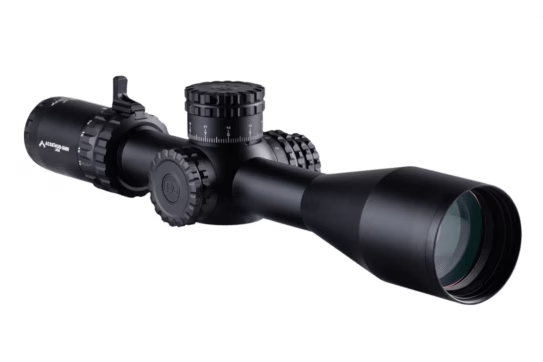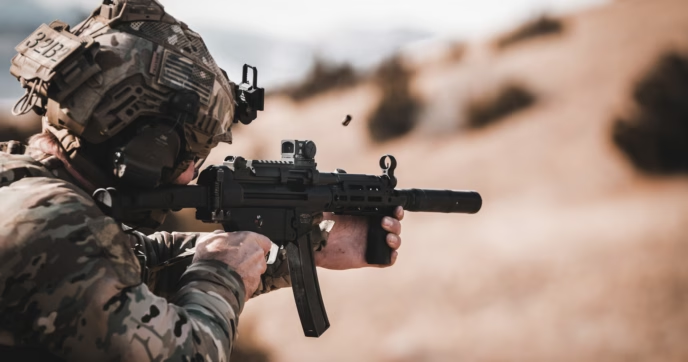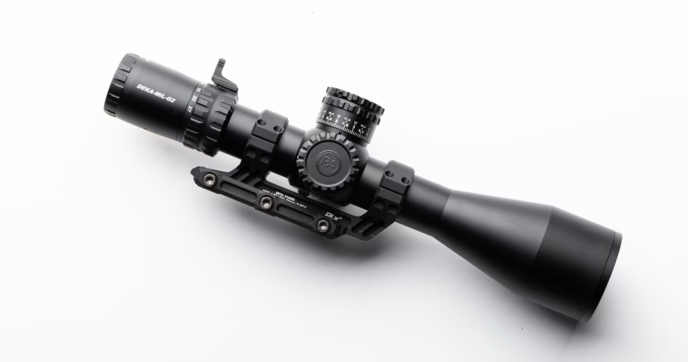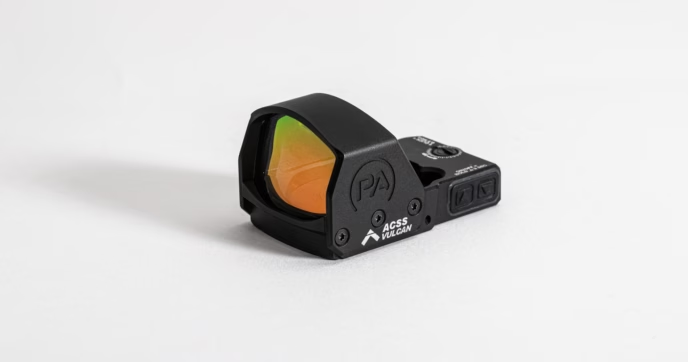For precision shooting disciplines requiring high-level marksmanship, variable power optics are widely favored for the job. With their popularity comes options, and unfortunately for new enthusiasts, simply searching for a “rifle scope” can open a can of worms so-to-speak, leading to more questions than answers in some cases.
Just like with any other optic variant, once you peel back to layers of what all’s available, it’s easy to get overwhelmed by the sheer variety of options and the various terms and acronyms used to distinguish them from each other.
Although some terms like LPVOs are well known amongst enthusiasts, another that stands out is the phrase ‘MPVO’, which is used for specialized optics designed to excel in long-range shooting disciplines. To the uninitiated, uncovering the differences of these optics can get confusing, but below, we’re breaking down what MPVO’s are, and why they’ve become so popular.
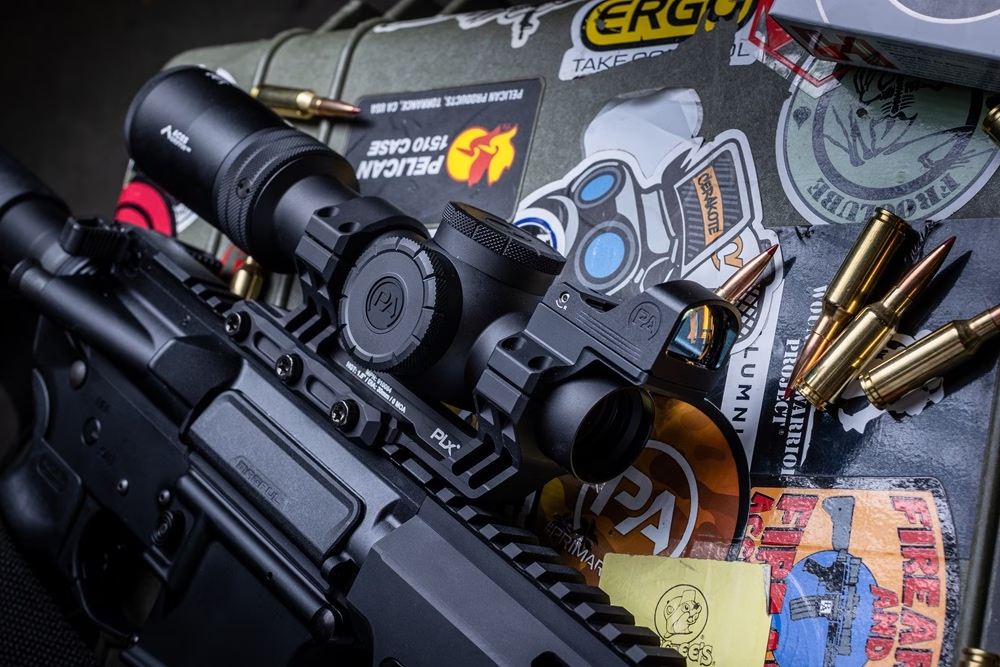
What is an LPVO?
To fully understand and appreciate MPVOs, it’s critical to know what an LPVO is. ‘LPVO’ is an acronym standing for “Low-Power Variable Optic”. These optics have gained serious notoriety in recent years, but the core concept of such rifle scopes has been around since the 1990s, and perhaps even earlier with one of the first dedicated LPVOs ever created being the Schmidt & Bender ShortDot scope, which had a 1-4x magnification range.
At their core, LPVOs effectively bridge the gap between optics designed for close quarters use like reflex sights and larger rifle scopes designed for long-range engagements. Nowadays, they’re easily some of the most common and popular variable power optics around, manufactured by several brands, and used on a plethora of rifles ranging from carbines like the AR-15, SIG MCX, and AKM to larger DMR style rifles like the AR-10, SCAR, and more.
LPVO Magnification Ranges
LPVOs, as their name suggests, are offered in an assortment of lower magnification ranges such as 1-4x, 1-6x, 1-8x, and even 1-10x in some instances. At 1x magnification, they provide you with a wide field of view (FOV), making them nearly as agile as reflex sights. This sentiment rings especially true when using reticles like the ACSS® NOVA® reticle system offered on select Primary Arms LPVO options, as its unique fiber wire reticle gives it a true Red Dot Bright® center dot.
When magnified, they offer an ample view of targets at further distances. First focal plane (FFP) LPVOs with complex reticles can house a multitude of specialized designs with ranging elements, crosshairs, and more, all of which become more visible as you increase magnification. As such, the versatility they offer is incredible, with them being a go-to optic for many, being used in everything from three-gun matches to hunting and defensive shooting applications.
Still, it’s important to recognize that LPVOs, while awesome, aren’t necessarily the ‘best’ choice for dedicated close- or long-range applications. The greatest advantage they offer is their versatility, making them a solid jack of all trades that’s adaptable for both close and medium- to long-range use. With that in mind, their long-range performance can leave something to be desired when targets range past around 750 to 800 yards. So, for applications calling for a bit more longevity, MPVOs can fill the role quite nicely.
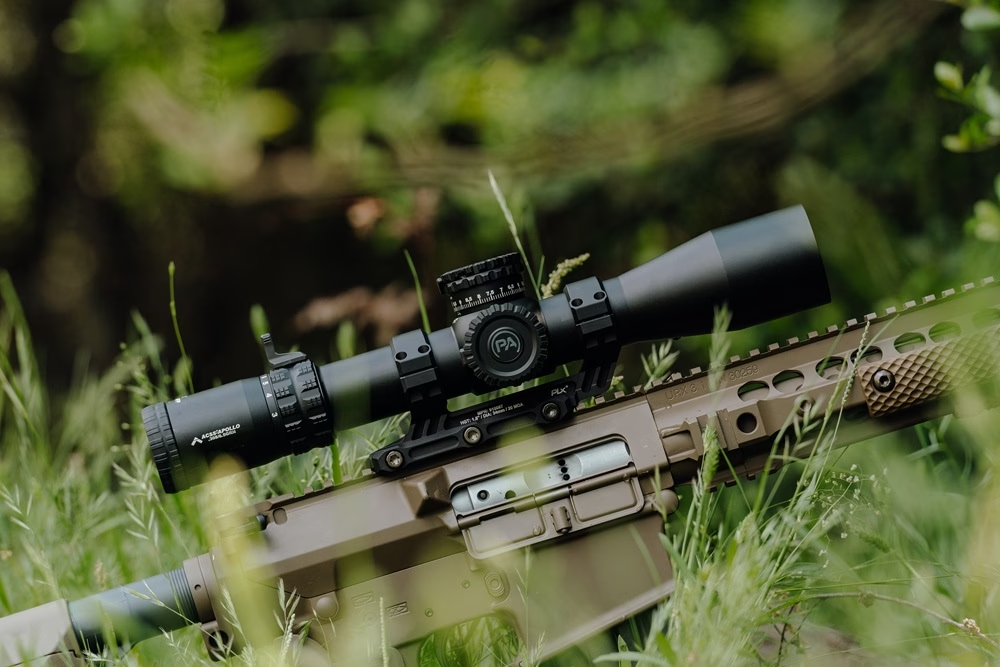
What is an MPVO?
MPVOs are what most enthusiasts think of when they hear the phrase “rifle scope”. Standing for “Medium-Power Variable Optic”, they come equipped with higher magnification ranges compared to LPVOs, as they’re designed to have greater medium- to long-range capabilities.
Optics like these have been around for quite some time, despite the term ‘MPVO’ being a relatively recent distinguishing name for them. Although telescopic optics can be traced back to the 1600s, variable power optics wouldn’t come about until much later, and once they were available, it was rare to see them with magnification ranges beyond around 3-9x magnification.
However, as optic manufacturing techniques became more advanced, it became possible for optics to use specialized reticles, and far greater magnification ranges, allowing for more specialized optics to become available. Today, MPVOs have carved out their own niche, with them being a popular addition to rifles built for long-range applications such as DMRs and bolt-action rifles.
MPVO Magnification Ranges
MPVOs are offered in a wide array of magnification ranges, including 2-10x, 4-16x, 3-18x, and even 2.5-20x, for example. Despite being designed for longer-range engagements, MPVOs with a minimum magnification between 2x and 4x magnification fall right within the visual sweet spot that allows you to easily shoot with both eyes open, making them quite capable at close range. Keep in mind, however, that this isn’t what they’re designed for, and their close-range utility is largely dependent on the reticle they house.
Consequently, they excel in applications calling for medium- and long-range precision, as they’re capable of ranging out to and beyond 1,000 yards, depending on the optic. Generally speaking, 3-18x scope options are among the most popular MPVOs as they offer a highly adaptable magnification range fit for many applications. For maximum reach though, 2.5-20x MPVOs have become highly sought-after. As such, you’ll typically see these optics on DMR platforms like AR-10s and the SCAR, as well as bolt-action rifles too.
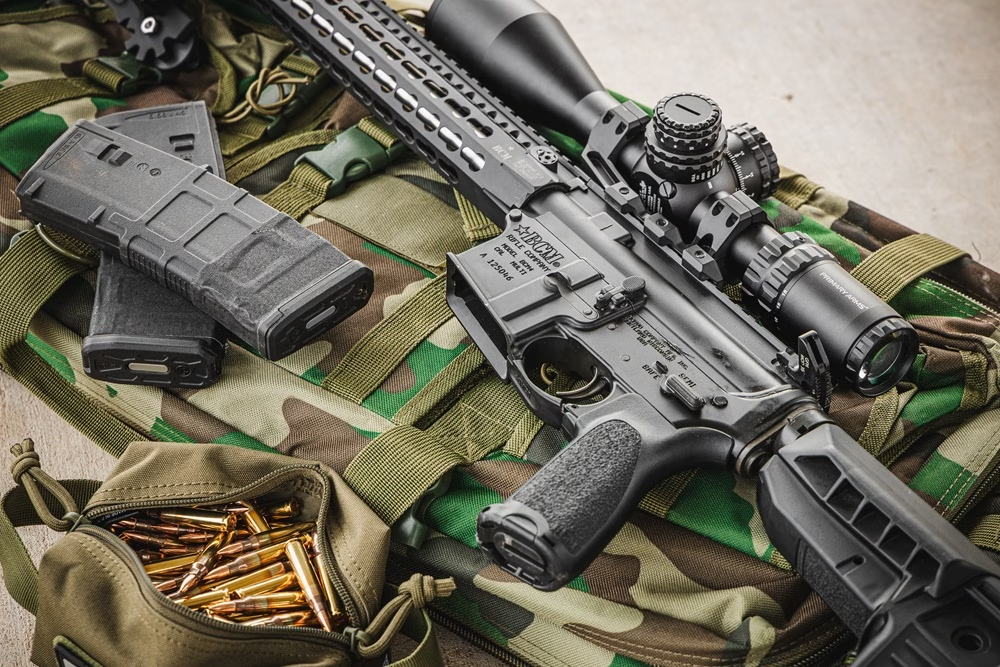
Characteristics of MPVOs
As you’d expect, MPVOs are quite different from LPVOs, with the most noticeable difference between them being their physical sizes. MPVOs have much larger objective lenses, allowing for better light transmission, which in turn, allows for a much better image clarity at higher magnification levels. Likewise, they often feature much more complex reticles as well to better accommodate long range marksmanship.
As we mentioned above, the ranged capabilities of LPVOs are limited heavily by their magnification range, meaning that their reticles can only range out so far, usually no more than around 800 yards. MPVOs don’t have this issue since they’re designed specifically for engaging targets across greater distances. As such, they most often come equipped with highly specialized reticles designed to house more complex elements that can range out to and beyond 1,000 yards.
Primary Arms Optics MPVO Models
Primary Arms Optics is home to an assortment of various optics ranging from reflex sights to various prism and rifle scopes. Among their rifle scope offerings though, Primary Arms MPVO options remain a standout choice amongst long-range shooting enthusiasts, as they have a plethora of models equipped with a multitude of reticle systems fit for various applications.
SLx® Series MPVOs

Primary Arms Optics SLx® 3-18×40 FFP Gen II Rifle Scope
The PAO SLx 3-18×40 FFP Gen II Rifle Scope is one of the most popular MPVOs in their lineup, offering exceptional versatility at a modest price point. Packed with a plethora of features such as enhanced windage/elevation turrets and multiple illumination settings, they’re constructed from a durable aluminum housing that’s waterproof and fog/shock resistant. Additionally, with their 30mm main tube, they’re compatible with a wide range of optic mounts. Even further, these optics can feature a plethora of reticles, including the ACSS® HUD DMR .308 Reticle, ACSS® Apollo® Reticle, and the ACSS® Athena® Reticle.
The ACSS HUD DMR .308 Reticle is a unique BDC reticle designed and calibrated specifically for use with .308 Winchester. Being a BDC reticle, there isn’t a need for any complex mathematic equations when aiming, as it includes ballistic holds that range out to 1,000 yards. Likewise, it also features windage holds and moving target leads as well, making it a well-rounded optic perfect for any .308 rifle.
Next, you can also opt for the ACSS Apollo Reticle system. Another BDC reticle, it’s unique in that you have the option of choosing either the ACSS Apollo .308/6.5 Grendel reticle, which is calibrated for .308 and 6.5 Grendel, or the ACSS Apollo 6.5CM/.224 Valkyrie reticle, which is calibrated for 6.5 Creedmoor and .224 Valkyrie. No matter which you choose, they share the same set of features, such as an infinitely precise center chevron aiming point, BDC holds that range out to 1,000 yards, as well as .2 MIL crosshair subtensions for more complex holds across varying distances.
Last is the ACSS Athena BPR MIL Reticle, which, as its name suggests, is a MIL-based reticle designed for adaptability and long-range accuracy. At its core, it’s one of the most precise reticles of its kind, capable of landing accurate hits on target well beyond 1,000 yards. Like the earlier reticles mentioned, it features an infinitely precise center chevron, but it also is equipped with a full MIL Grid spaced in 1-MIL increments, as well as crosshairs with MIL subtensions, making it highly adaptable across multiple applications.
PLx® Series MPVOs
PLxC® 2.5-20×48 FFP Compact Rifle Scope
Coming soon to the PLx® optic family is the PLxC® 2.5-20×48 MPVO. While you might assume that this optic must be bulky and heavy based on its impressive magnification range, you might be surprised to hear that it’s quite the opposite. Measuring only 11.5 inches long and weighing only 30.05 ounces, it’s constructed from an exceptionally durable aluminum housing that’s water, shock, and fog proof. It comes standard with multi-coated premium-grade ED glass lenses, and it’s equipped with AutoLive® motion-sensing illumination that automatically turns the optic on when moved. Plus, for better battery conservation, it has an automatic shut-off feature as well.
Its 2.5-20x magnification range makes it a premier choice for rifle builds that emphasize long-range versatility like SPRs and DMRs. At 2.5x magnification, it’s agile enough to engage close-range targets, while it’s 20x magnification allows you to easily range out to well beyond 1,000 yards when needed. At launch, these optics are going to be available with our new ACSS® Athena G2 and ACSS® DEKA G2 reticle systems.
Both reticles are extremely well-suited for long-range precision. The ACSS® Athena G2 is an updated version of the ACSS Athena reticle, using an updated design that features a more comprehensive MIL-grid, and a center dot as opposed to a center chevron aiming point. Meanwhile, the ACSS DEKA® G2 is another solid reticle system that uses a crosshair design with MIL-based subtensions as well as a metric-based ranging ladder, albeit with no MIL grid—plus, like the Athena G2, it also uses a center dot for its point of aim.
Being part of the PLx line, the PLxC 2.5-20×48 FFP Rifle Scope is ready for everything from recreational shooting to intensive competitive and duty use, offering professional performance in a compact package.
Conclusion
MPVOs have cemented their legacy as some of the most widely used optics available today. With the advancements in optics industry taking their capabilities to new heights, they excel across a wide range of applications, being perfect for everything from simplistic recreation to more intensive training and professional level applications.
Although they don’t match the LPVO’s speed at close range, they more than make up for it with their ability to range out to far-off distances, all while housing more complex reticles fit for precision marksmanship.
So, whether you’re looking for a new scope for your next hunting rifle or need an optic fit for adaptability across a wider range of distances, you can’t go wrong with an MPVO.
